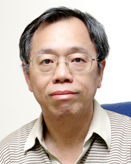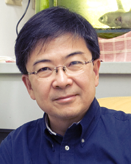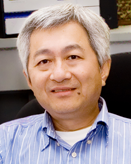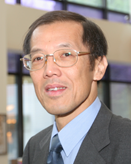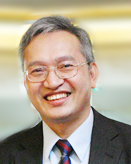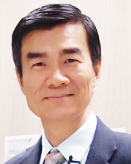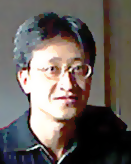Coordinator 講座活動總策劃
Chi-Keung Chan 陳志強 (MORE)
- Research fellow, Institute of Physics, Academia Sinica 中央研究院物理研究所
LECTURER 講座大師
William Bialek (MORE)
- John Archibald Wheeler/Battelle Professor in Physics, Princeton University
- Visiting Presidential Professor of Physics, The Graduate Center, City University of New York
A theoretical physicist interested in the phenomena of life, Bialek is known for his work emphasizing the approach of biological systems to the fundamental physical limits on their performance. Most recently, he and his collaborators have shown how the collective states of biological systems, such as the activity in a network of neurons or the flight directions in a flock of birds, can be described using ideas from statistical physics, connecting them in quantitative detail with new experimental data.
Bialek has been a member of the Princeton faculty since 2001. He has received the President’s Award for Distinguished Teaching at Princeton, and recently published a textbook, Biophysics: Searching for Principles. A member of the US National Academy of Sciences and a fellow of the American Physical Society, he received the 2013 Swartz Prize for Theoretical and Computational Neuroscience from the Society for Neuroscience.
AGENDA 議程
10/30(Mon.) Mini workshop - Principles in Complex Biophysical Systems and beyond
1F Auditorium, Institute of Physics, Academia Sinica
Director Ting-Kuo Lee (Institute of Physics, Academia Sinica)
Thinking about 1000 neurons
Noises and dynamics in cells: Mathematical modeling in systems biology
Analytic solution of a phenotype transition model for a single cell
Encoding a sequence of dynamical contrast pattern in the mouse retina
Anticipative Dynamics of A retina
The Origins of Apical Constriction Force of Madin-Darby Canine Kidney (MDCK) Cysts
Regulation of the mitotic motor protein Eg5 by Casein Kinase 2 and cancer drug treatment
Cooperative motion of confluent endothelial/cancer cell mixtures
Pattern Formation of Cell-Division Regulating Min-Proteins in Bacteria Cells
Encoding information beyond the circadian scale in the multi-oscillator circadian clock
Developing adaptive data analysis approaches for protein research
Multi-scale multi-dimensional imaging for brain
From neuronal images to brain network
Diversity and Stability in the Dynamics of a Fruit Fly Brain Model
Brownian motion of electric circuits in feedback- created virtual potentials
Conditions for equivalent fluctuations in hierarchical biological networks
P.S. All short talks are 15 min including time for questions.
(Language: English 全程以英文進行)
10/31(Tue.) Public talk 公開演講 - The physics of life: How much can we calculate?
Intl. Conference Room (3F), Humanities and Social Sciences Building, Academia Sinica 中央研究院人文社會科學館 3F 國際會議廳
訪談
訪談人 - 國立中央大學物理學系 陳宣毅教授
Opening 開場
Public Talk 公開演講 - The physics of life: How much can we calculate?
[Abstract 摘要]
In the four hundred years since Galileo, the physics community has constructed a remarkably successful mathematical description of the world around us. From deep inside the atomic nucleus to the structure of the universe on the largest scales, from the flow air over the wing of an airplane to the flow of electrons in a computer chip, we can predict in detail what we see, and what will happen when we look in places we have never looked before. What are the limits to this predictive power? In particular, can we imagine a theoretical physicist's approach to the complex and diverse phenomena of the living world? Is there something fundamentally unpredictable about life, or are we missing some deep theoretical principles that could bring the living world under the predictive umbrella of physics? Exploring this question gives us an opportunity to reflect on what we expect from our scientific theories, and on many beautiful phenomena. I hope to leave you with a deeper appreciation for the precision of life's basic mechanisms, and with optimism about the prospects for better theories.
Forum and Discussions 論壇
[Panelist 與談人]
Dr. Ann-Shyn Chiang 江安世院士
Dr. Y. Henry Sun 孫以瀚特聘研究員
Dr. Hoong-Chien Lee 李弘謙教授


